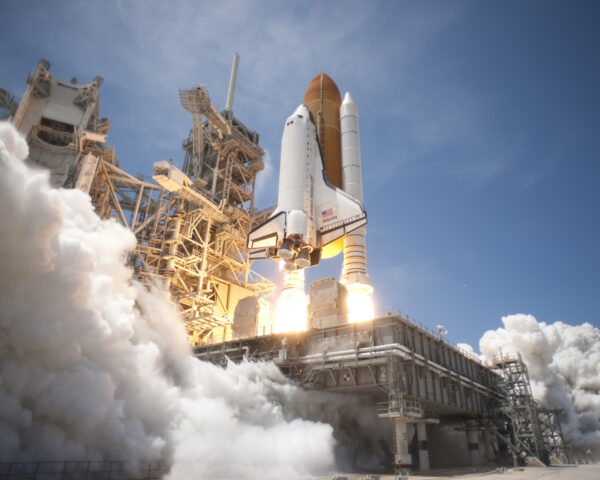
In what appears to be an ever-increasing pace, engine manufacturers around the world are pursuing a range of strategies to produce low and zero carbon solutions to meet tightening emission standards.
A popular engineering choice made by a growing number of manufacturers is battery electric propulsion, using lithium ion based chemical batteries to power electric motors. The Watercraft Journal has documented a number of recent developments of these projects, such as the Sea-Doo E-GTI, Taiga Motorsport’s Orca Carbon, and the Maverick GT. There are many advantages to battery electric PWCs, but one major drawback is the highly significant weight and volume penalty due to the low energy density of chemical batteries.

The batteries currently used in automotive applications take up somewhere around 15 times as much space (volumetric energy density) and weigh (gravimetric energy density) something like 50 times their gasoline equivalent. When it comes to PWCs this obviously has a large effect on range, particularly when cruising speed is considered.
Packaging batteries as opposed to fuel tanks and large, complex internal combustion engines offers a wider range of creative design opportunities, but the vast differences in energy densities put practical limits on the real-world end results.

The battery equations simply work better for passenger and sport cars, and possibly commercial vans and trucks than they do for watercraft and aircraft. As an example, the fuel tanks on some PWCs are larger than those found on many cars, yet the machines themselves are much smaller and so are the distances they can travel on that fuel. It simply takes a lot more energy to push a hull through water than it does to push a wheeled vehicle down a road.
Other factors that need to be considered are the ability to take extra fuel for longer trips when required, and refueling options and time frames. Then there are purely subjective aspects such as the sound and characteristics of high performance supercharged internal combustion engines. For some, electric PWCs will be the best fit, and in fact will likely bring entirely new participants out onto the water.

However, for those that are not yet ready to give up on the internal combustion engine, there may yet be a way to save it from being consigned to history: Hydrogen power.
In what may well turn out to be a consequential move, Yamaha has joined Kawasaki in developing hydrogen powered motorcycle engines. Kawasaki has long been researching and building hydrogen fueled engines, and along with many other applications intends to produce them for sea craft.

With the natural crossover of motorcycle and PWC engine designs, having Yamaha in the fold should bolster this effort immensely. But hydrogen isn’t a simple swap for gasoline, and it is important to understand the basic properties of hydrogen and the challenges of using it as a fuel.
Hydrogen is the lightest element, literally just a proton and an electron. The stable form of hydrogen, which is the form used for fuel, is H2 – molecular hydrogen, 2 hydrogen atoms chemically bonded to form a simple molecule. It burns very fast and has the highest heat conductivity of all elements. Hydrogen molecules literally move faster and disperse faster than any other gas.
When you burn hydrocarbons such as gasoline, diesel, LPG or methane you are really just burning the hydrogen component of the fuel. The carbon is essentially just along for the ride. It changes the properties of the fuel in fundamental ways, many helpful, many not, but it is the hydrogen that is doing the actual work.

In liquid fuel chemical rocket engines hydrogen is king. It is a high thrust fuel with the highest efficiency, seeing use in NASA’s Space Shuttle main engines among many others. When it comes to internal combustion engines, using hydrogen as a fuel source shows great potential if a number of complex hurdles can be overcome.
Hydrogen is very high octane, rated above 130 on the RON scale, but that doesn’t tell the whole story. In line with the high-octane rating hydrogen can resist compression ignition very well, but hotspots in the combustion chamber can cause pre-ignition easily thanks to its low ignition energy. It is also more prone to back firing, so accurate valve timing is critical.
The stoichiometric air / fuel ratio of hydrogen is 34:1 (compared to 14.7:1 for gasoline) and can be run far leaner in some designs, meaning a little fuel goes a long way. It also has very high gravimetric energy density, around 3 times better than gasoline. However, the volumetric density is quite low, at best around 30% that of gasoline.

Extremely low temperatures and high pressures are needed for hydrogen storage, and the tanks themselves are heavy and expensive. The volume and weight of large, pressurized tanks mean that hydrogen too may have range issues just like battery electric power, but it remains to be seen precisely where the equation will land for hydrogen.
The risks of storage and usage of hydrogen are not insignificant but are not particularly higher than risks for other fuels whether liquids or compressed gasses. Producing hydrogen isn’t necessarily easy, but the stuff is everywhere; it is virtually impossible to run out. There may be no guarantees, but the Yamaha / Kawasaki partnership is a good sign for the future of hydrogen powered PWCs.





